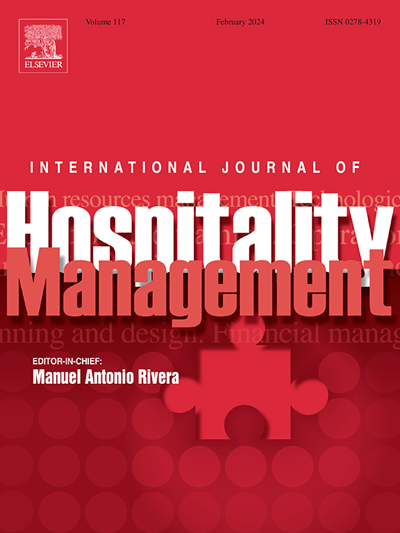一席之位:设计包含信号的菜单
IF 8.3
1区 管理学
Q1 HOSPITALITY, LEISURE, SPORT & TOURISM
International Journal of Hospitality Management
Pub Date : 2025-09-19
DOI:10.1016/j.ijhm.2025.104425
引用次数: 0
摘要
尽管这是一个相当大的细分市场,但在酒店空间和研究中,饮食限制的客户往往被忽视。本研究通过应用包容性设计框架来研究餐厅菜单如何更好地满足他们的需求,从而解决了这一差距。通过三个连续的调查,本研究首先通过半结构化访谈收集消费者反馈,以确定标志包容性的菜单设计元素,从而拥抱包容性设计原则。其次,使用此反馈,进行联合分析,以确定属性的重要性排序。第三,实证检验已识别的要素,以评估包容性线索如何影响情绪和态度反应,最终塑造顾客的行为意图。研究结果揭示了菜单设计中包容性考虑的重要性,以及它们对酒店和旅游业消费者行为的影响。本文章由计算机程序翻译,如有差异,请以英文原文为准。
A seat at the table: Designing menus that signal inclusion
Despite representing a substantial market segment, customers with dietary restrictions are often overlooked in hospitality spaces and research. This study addresses that gap by applying an inclusive design framework to examine how restaurant menus can better meet their needs. Across three sequential inquiries, this research embraces inclusive design principles by first collecting consumer feedback through semi-structured interviews to identify menu design elements that signal inclusivity. Second, using this feedback, a conjoint analysis is conducted to rank the identified attributes in order of importance. Third, the study empirically tests the identified elements to assess how inclusive cues influence emotional and attitudinal responses, ultimately shaping customers’ behavioral intentions. The findings shed light on the importance of inclusive considerations in menu design and their impact on consumer behavior within the hospitality and tourism industry.
求助全文
通过发布文献求助,成功后即可免费获取论文全文。
去求助
来源期刊

International Journal of Hospitality Management
HOSPITALITY, LEISURE, SPORT & TOURISM-
CiteScore
21.20
自引率
9.40%
发文量
218
审稿时长
85 days
期刊介绍:
The International Journal of Hospitality Management serves as a platform for discussing significant trends and advancements in various disciplines related to the hospitality industry. The publication covers a wide range of topics, including human resources management, consumer behavior and marketing, business forecasting and applied economics, operational management, strategic management, financial management, planning and design, information technology and e-commerce, training and development, technological developments, and national and international legislation.
In addition to covering these topics, the journal features research papers, state-of-the-art reviews, and analyses of business practices within the hospitality industry. It aims to provide readers with valuable insights and knowledge in order to advance research and improve practices in the field.
The journal is also indexed and abstracted in various databases, including the Journal of Travel Research, PIRA, Academic Journal Guide, Documentation Touristique, Leisure, Recreation and Tourism Abstracts, Lodging and Restaurant Index, Scopus, CIRET, and the Social Sciences Citation Index. This ensures that the journal's content is widely accessible and discoverable by researchers and practitioners in the hospitality field.
 求助内容:
求助内容: 应助结果提醒方式:
应助结果提醒方式:


